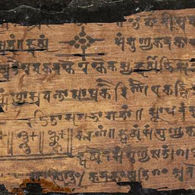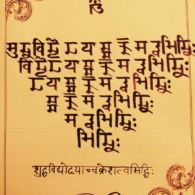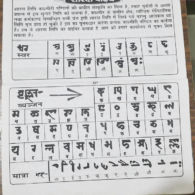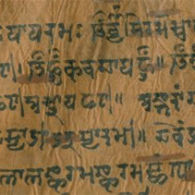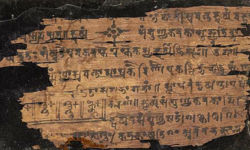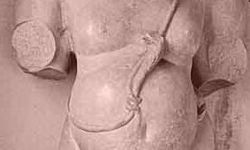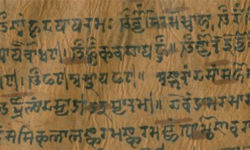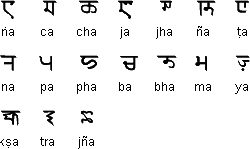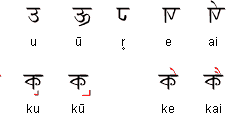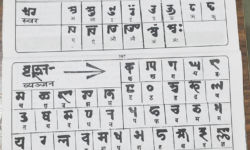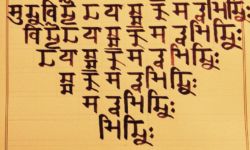Profile
The Sharada script was once widespread over the northwest parts of the Indian subcontinent, used to write Sanskrit, Kashmiri, and other languages of northern South Asia, first as inscriptions on stone, copper, and other media. Even when its range shrank, it was still the principal means of inspirational and literary writing in Kashmir until the late nineteenth or early twentieth century.The history of Kashmir in recent years, though, has been divided, disastrous, and bloody, and the decline of the Sharada script is just one symptom of that history.
The script’s marginalization began in the nineteenth century with the rise of a variant of the Persian script, which by the 1950s had become the official script of the state. By the end of the twentieth century, the only people still writing in Sharada were Kashmiri Pandits, who used it for religious and ceremonial purposes.
Sectarian violence, which had riven Kashmir since Partition, returned in force in the late 1980s. Perhaps twenty percent of the Kashmiri Pandits, a Saraswat Brahmin Hindu community who were the original inhabitants of the Kashmir Valley, had left Kashmir after the 1950 land reforms, but an estimated 140,000 had stayed. Though they comprised fewer than 10% of the population of Kashmir, they were in general highly educated and literate, and socially elite.
They were increasingly the targets of threats and persecution by radical Islamists: on 19 January 1990, for example, mosques issued declarations that all male Kashmiri Pandits had to quit Kashmir (leaving their women behind), convert to Islam or be killed. Kashmiri Muslims were instructed to identify Pandit homes so they could be targeted for conversion or killing.
Estimates of the number of Pandits who left the valley during the decade start at 100,000.
The BBC World Service reported in 2013 that “Many of the 250,000 refugee Kashmiri Pandits have been living in pitiable conditions in Jammu, a Hindu-majority region south of the Kashmir Valley, as well as in other parts of India. I visited a camp in Jammu where families live in one-room brick houses covered with tin sheets, among open sewers.”
The vast majority of Kashmiri Pandits remain in exile.
You can help support our research, education and advocacy work. Please consider making a donation today.
Links
General Script, Language, and Culture Resources
- Omniglot
- Wikipedia
- Unicode (PDF)
- Koshur Lessons on Spoken Kashmiri
- Background on Sharada Script
- Scriptsource
- Devanagari – Sharada Script Translator
- Learning Śāradā Lipi
